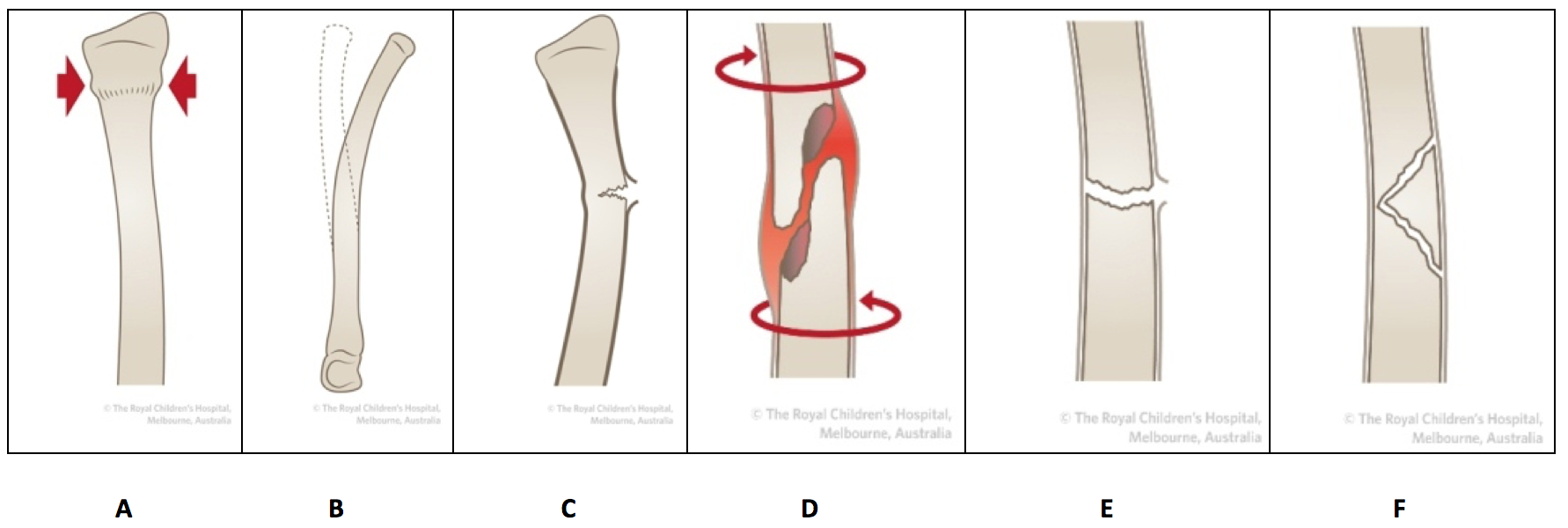views
Injuries and fractures are common in children due to their high activity levels and developing bones. Recognizing the most frequent types of fractures can help parents, caregivers, and healthcare providers respond quickly to injuries, ensuring children receive the best care and recover fully. At All Kidz Urgent Care, we focus on providing comprehensive care for all types of pediatric injuries, including fractures, to keep kids healthy and active.
Understanding Fractures in Children
Fractures occur when a bone is broken due to a high-impact force or stress beyond what it can withstand. Children are particularly vulnerable to fractures as their bones are still growing, making them softer and more flexible than adults’. Unlike adult bones, children's bones have growth plates, areas of developing cartilage near the ends of long bones, which are essential for growth but prone to injury. At All Kidz Urgent Care, we emphasize understanding the unique characteristics of pediatric bones to better address childhood fractures and ensure proper healing.

Causes of Fractures in Children
Children’s fractures commonly result from active play, sports, and accidents. Falls, particularly from playground equipment, as well as sports-related injuries, are frequent causes. In younger children, risk factors include still-developing coordination and balance, while older kids may encounter fractures through high-contact sports or other physical activities. Recognizing these causes is essential to implementing proper prevention strategies and identifying fractures early, something we prioritize at All Kidz Urgent Care.
Types of Fractures Common in Children
The following fractures are frequently seen in pediatric patients and are treated regularly at All Kidz Urgent Care:
Greenstick Fractures
Overview: This type of fracture occurs when a bone bends and cracks on one side, without breaking completely. This is common in children due to their flexible bones.
Symptoms and Treatment: Pain, swelling, and limited mobility are typical symptoms. Treatment generally includes immobilization with a cast or splint to allow proper bone alignment and healing.
Torus or Buckle Fractures
Overview: These fractures occur when the bone compresses and creates a buckle or bump. Torus fractures are common in the forearm and wrist.
Symptoms and Treatment: Visible swelling and pain at the injury site are typical. Treatment involves casting to support the bone while it heals, which usually takes several weeks.
Growth Plate Fractures
Overview: Growth plate fractures affect the areas of developing tissue at the ends of long bones and are unique to children and teens.
Symptoms and Treatment: Symptoms may include pain, swelling, and visible deformity. Growth plate fractures require prompt attention and careful management at All Kidz Urgent Care to prevent long-term growth issues, often involving casting or, in severe cases, surgery.
Transverse Fractures
Overview: This fracture type occurs straight across the bone and often results from direct trauma.
Symptoms and Treatment: Pain, swelling, and restricted movement are usual symptoms. Casting is a common treatment method, though some cases may need surgical intervention if the fracture is severe.
Spiral Fractures
Overview: These fractures result from twisting injuries, often involving the arms or legs.
Symptoms and Treatment: Swelling, tenderness, and a visible deformity might indicate a spiral fracture. Depending on the fracture's complexity, treatment can include casting or surgery to realign the bone.
Signs and Symptoms of Fractures in Children
While each fracture type has unique symptoms, common signs include visible swelling, bruising, tenderness, and restricted movement in the affected area. Children may resist using the injured limb and experience pain when pressure is applied. Observing these symptoms early can prompt a quick visit to All Kidz Urgent Care for a complete evaluation and accurate diagnosis.
Diagnosis and Imaging Techniques for Fractures in Children
A physical examination followed by imaging is the standard approach for diagnosing fractures in children. X-rays are typically the primary tool used, offering a clear view of the bone structure to assess the fracture's type and severity. In cases where more detail is needed, advanced imaging such as MRI or CT scans may be recommended to determine the fracture's impact, especially with growth plate injuries.
Treatment Options for Childhood Fractures
Treatment varies based on the fracture type and severity, with options that may include casting, splinting, or, in severe cases, surgery. Growth plate fractures, for example, require particular care to ensure that healing does not impact bone growth. Our team at All Kidz Urgent Care follows evidence-based approaches to ensure effective recovery and minimize potential complications. Physical therapy may also be recommended to help restore full mobility following cast removal.
Healing and Recovery in Children
The healing process in children is generally faster than in adults, thanks to their growing bones. Depending on the fracture type and location, healing may take several weeks to a few months. Consistent follow-up is essential, especially for fractures involving growth plates, to ensure bones heal correctly and continue growing normally. At All Kidz Urgent Care, we monitor recovery closely and provide support to help children regain full function and return to their regular activities.
Preventing Fractures in Children
Parents and caregivers can play a crucial role in preventing fractures. Ensuring safe play areas, using proper protective gear during sports, and teaching children safe movement techniques can significantly reduce the risk of injury. All Kidz Urgent Care offers advice to families on how to create safe environments and practices that keep children active while minimizing fracture risks.

Conclusion
Fractures are common injuries in children, but prompt treatment and specialized care can lead to full recovery. Recognizing the types of fractures children are prone to and understanding the appropriate treatment methods is crucial for parents and caregivers. At All Kidz Urgent Care, we are dedicated to offering expert care for all types of pediatric fractures, prioritizing fast, effective, and compassionate treatment that keeps children safe and healthy.
FAQs
What are the warning signs of a fracture in children?
Swelling, pain, and limited mobility in the injured area are common signs of a fracture.
How long does it take for fractures to heal in children?
Healing times vary but typically range from a few weeks to several months, depending on the fracture type.
Can fractures affect a child’s growth?
Growth plate fractures may impact growth, which is why specialized care is essential.
What activities are safe during fracture recovery?
Low-impact activities are typically recommended, but your healthcare provider will offer specific guidance.
Are fractures more common in certain age groups?
Yes, children and teens are more prone to fractures due to high activity levels and developing bones.






















Comments
0 comment